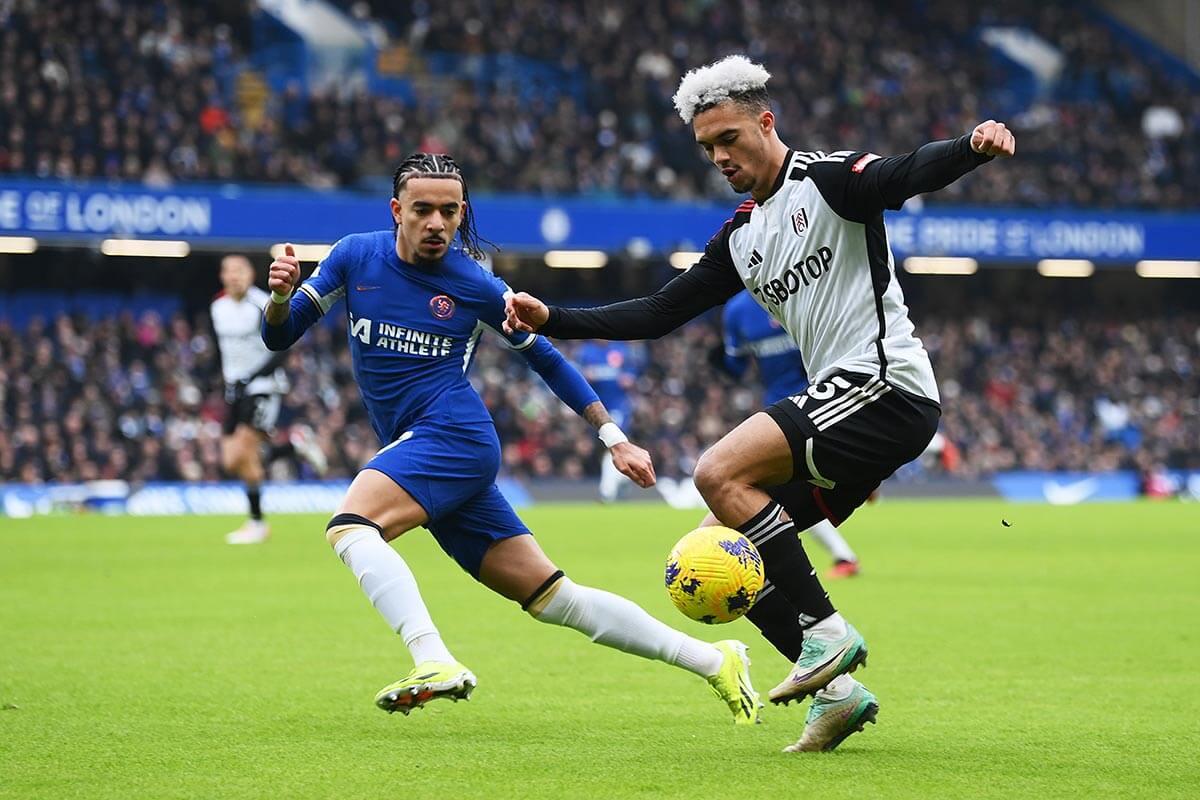Chelsea 1-0 Fulham
Last Saturday's local derby at Stamford Bridge turned out to be one of those midday games that leaves the neutral viewer unsatisfied.
Fulham showed more commitment than they did in the corresponding home match back in October – but still failed to impress.
Perhaps the semi-final Carabao Cup defeats had taken their toll on both teams. Blues fans will have welcomed the fourth successive home win whilst Fulham will wonder how they had missed out once more. It was telling that the only goal in the 90+ minutes came from a penalty.
Rested
Timothy Castagne and Bobby DeCordova-Reid were due for a rest even if their absence from the starting line-up did not help Fulham's chances against Chelsea. In the opening minutes at the Bridge, the visitors gave away the ball too often but still looked capable of penetrating the home defence, especially with Willian and Antonee Robinson in a lively mood.
The pair created a good chance for Harry Wilson but the Chelsea keeper Djordje Petrovic had no problem saving. Shortly afterwards, Willian endured a wild tackle from Malo Gusto, which earned an early yellow card but fortunately did not cause lasting harm. It was not a rough match and the referee Anthony Taylor kept it flowing with barely any recourse to VAR. Presumably that is why he did not take a second, closer look at Gusto's foul. I share Marco Silva's bewilderment.
Penalty
A string of Fulham corners came to nothing and the visitors were to rue their wastefulness when Chelsea scored from the penalty spot just before the interval. Raheem Stirling was making a nuisance of himself (as usual) and lured Issa Diop into a costly foul. Cole Palmer gave Chelsea the lead.
The excitement levels rose after the interval. Raul Jimenez became more prominent and had two reasonable efforts on target. He later tried an optimistic punt from the half-way line before being replaced by Rodrigo Muniz. The big Brazilian did win an important free kick, but Willian's effort soared over the crossbar.
Meanwhile, Chelsea's Conor Gallager hit the post and Bernd Leno defied other strikes. In a frantic finish neither side could produce a goal from open play. Once again, Fulham returned from Stamford Bridge empty-handed.
The players now have a short break until Wednesday 24 January for the second leg of the Carabao Cup semi-final. It will be closely followed by the Fourth Round of the FA Cup where Fulham face Newcastle – it all kicks off at 7pm (!) on Saturday 27 January.
FA Cup history
Supporters conversant with the club's history will be reminded of the identical fixture on 28 January 1956. The Geordies were the FA Cup holders while Fulham were out of the top tier so this David/Goliath fixture attracted plenty of publicity. The Editor of the Fulham Advertiser invited various local people, including my mother, to predict the result. She and I reckoned that the visitors' only known frailty was in their rearguard, so we pinned our hopes on that.
I brought to the match my somewhat temperamental cinecamera, which used 60 second cassettes. The game was played at such a pace that I soon finished my cassette photographing thwarted Fulham attacks at the Putney End.
Meanwhile at the Hammersmith End, Newcastle had established a three-goal lead. Spectators (all 40,000 of them) were not segregated in those days, but whichever way I looked I found a feeling of anti-climax – the match decided with over an hour remaining. Not even a Fulham goal from Trevor Chamberlain on his Cup debut could lift the spirits.
Halftime boon
Something odd must have occurred during the interval. Perhaps a Fulham Advertiser found its way into the dressing room because when play resumed Chamberlain and Johnny Haynes threw the works at Newcastle right back Al Woodward.
In no time, Chamberlain had the ball in the net only to see referee Jack Taylor disallowing the goal after consulting the linesman.
Unabashed the left winger struck twice more, levelling the scores and completing his hat-trick. Then Jimmy Hill, who was playing on the right wing, put the Whites 4-3 ahead in the 76th minute.
Johnny Haynes recalled that incredible moment in an interview with Bob Ferrier: "Hats, umbrellas, newspapers, programmes, balloons, everything went up in the air."
He was exaggerating of course. I don't remember any balloons. But he did not mention the complete strangers exchanging handshakes and bear hugs. You would have thought that the entire stadium were Fulham supporters.
The fans from the north east came out of hiding when referee Taylor allowed Newcastle's Vic Keeble to shove goalkeeper Ian Black over the goal-line while he was holding the ball – a dubious decision, so what is it with referees called Taylor?
And the same forward subsequently nodded home the winner. You can still watch all nine goals on Pathe News.
For me and thousands of others it was the most exciting match of our lives – despite the Fulham loss. I never saw the like until our Juventus triumph over half a century later.
The views expressed in this blog are those of the author and unless specifically stated are not necessarily those of Hammersmith & Fulham Council.

